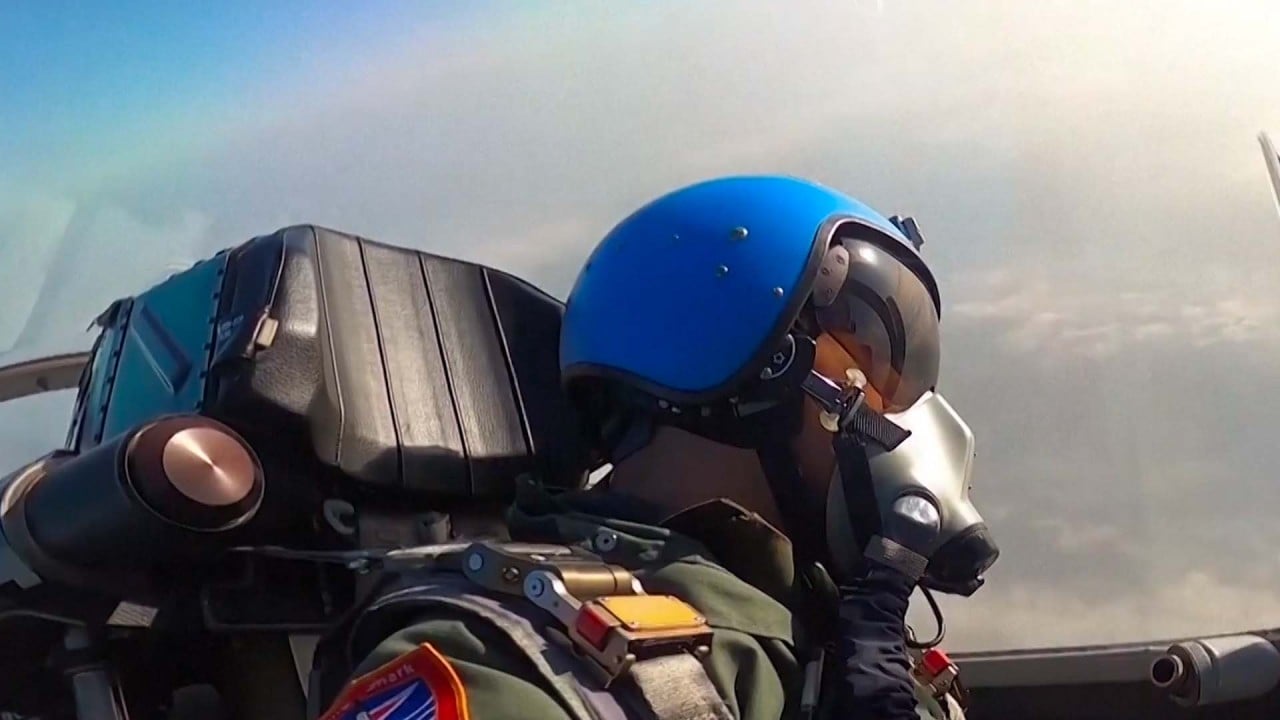
China says Shandong aircraft carrier handled foreign reconnaissance ‘prudently’
- The carrier and its escorts recently took part in a series of drills around Taiwan that were watched by the US and Japan
- State broadcaster CCTV says the group sailed to the western Pacific recently in a ‘systematic and large-scale manner’
The carrier sailed to the western Pacific for the first time “in a systematic and large-scale manner” and participated in a series of patrols and drills around the island, the report added.
Beijing claims the island as part of its territory – and has never renounced the use of force to regain control – and regarded the meeting as a serious breach of its sovereignty.
China’s Shandong aircraft carrier sets new sortie benchmark
CCTV said Shandong carrier strike group conducted joint exercises with the PLA’s Rocket Force, land-based aircraft and other surface combat forces outside the “island chain” which stands between mainland China and the deep ocean.
The exercises included joint search and anti-submarine operations, joint fire strikes, and regional air control operations, according to the report and a video released by CCTV.
The video also showed J-15 fighters taking off and landing from the carrier’s deck and an escort that included at least five other warships, with the Type 052D guided-missile destroyer Jiaozuo and combat support ship Chaganhu clearly identified.
Shandong’s manoeuvres were closely monitored by Taiwan, the US and Japan, and previous state media reports have said the USS Nimitz aircraft carrier watched the exercises from a distance.
“Faced with the complex situation of foreign warships and warplanes taking turns to conduct reconnaissance and testing, the formation always actively responded and handled it prudently, effectively improving its actual combat capabilities,” the latest CCTV report said.
Shandong passed through the Bashi Channel before reaching waters southeast of Taiwan, on April 5, according to the Taipei authorities.
Two days later the carrier group started exercises in the Philippine Sea, east of Taiwan and south of the Ryukyu chain, according to information released by Japan last month. Tokyo also said the country had scrambled fighter jets in response to the Shandong’s manoeuvres.
China also conducted a large-scale series of exercises around Taiwan after McCarthy’s predecessor as speaker Nancy Pelosi visited the island in August.
Yue Gang, a retired PLA colonel, said the “foreign” forces CCTV referred to were the Japanese and American forces that had repeatedly surveilled Chinese forces.
He added that Shandong’s most recent drills tested its joint and coordinated strike capabilities along with other forces such as rocket forces that could offer support for the group in responding to threats from US warships.
China’s Fujian aircraft carrier set for ‘new-type’ planes
The PLA has also been stepping up the pressure on the island with further exercises and sending warplanes close to the island on a near-daily basis.
Many countries, including the US and Japan, do not officially recognise Taiwan as an independent state but oppose the use of force to change the status quo.


